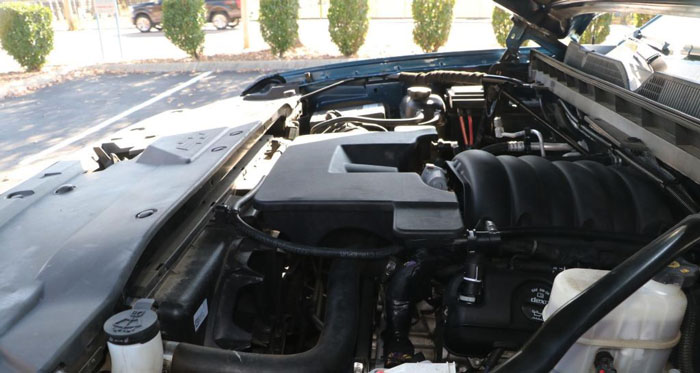So, you’re cruising along in your Chevy, feeling like you own the road, when suddenly, your 8 cylinders decide to play hide-and-seek and transform into 4 cylinders. Talk about a party pooper! As a self-proclaimed Chevy enthusiast, I’ve had my fair share of experiences with this quirky little issue. From mysterious engine hiccups to the perplexing disappearance of power, the transition from 8 cylinders to 4 can leave you scratching your head in disbelief.
Picture this: you’re at a red light, ready to unleash the full potential of your Chevy’s 8 cylinders, only to find out that half of them have gone on strike. It’s like having a V8 engine that’s suddenly unsure if it wants to be a V4 or a V8. The struggle is real, my friends. So, buckle up as we jump into the wild world of Chevy’s 8 to 4 cylinder mysteries and unravel the peculiar problems that come with it.
Overview of Chevy 8 Cylinder to 4 Cylinder Transition
Well, buckle up folks! We’re diving into the wild ride of Chevy’s 8-cylinder engines unexpectedly transforming into 4 cylinders. It’s like expecting a feast and ending up with a light snack instead. Let’s unveil the mysteries and mishaps of this surprising switcheroo.
Key Technologies Involved
Ah, the secrets behind the curtain! When the magic happens to convert those extra cylinders into quiet bystanders, it’s all about cylinder deactivation. Here’s the scoop straight from the engine room:
- Active Fuel Management (AFM): This fancy tech shuts down half of the cylinders under light load conditions, making your engine run more efficiently. It’s like having a turbo boost for fuel efficiency.
- Variable Valve Timing (VVT): Talk about multitasking for engines! VVT adjusts the opening and closing of the intake and exhaust valves, playing a key role in optimizing performance and economy.
- Engine Control Module (ECM): The brains behind the brawn! The ECM dictates when to activate the cylinder deactivation mode, ensuring a seamless transition between 8 and 4 cylinders.
Benefits of Cylinder Deactivation
Who knew downsizing could have its perks? When your powerhouse decides to take a breather and chill with only 4 cylinders, here’s what you get:
- Improved Fuel Economy: It’s like your engine’s gone on a diet, sipping fuel conservatively while cruising down the road. Saving money at the pump has never felt better!
- Reduced Emissions: Mother Nature would be proud! With fewer cylinders firing away, your vehicle becomes a little eco-friendlier, emitting fewer harmful gases into the atmosphere.
- Smooth Driving Experience: Say goodbye to those jerky rides! Cylinder deactivation ensures a seamless transition, offering a smooth and tranquil drive without compromising on power when needed.
There you have it – the quirky yet intriguing area of Chevy’s transition from 8 cylinders to 4 cylinders. Who knew downsizing could be so intriguing?
Common Problems Faced by Chevy 8 to 4 Cylinder Engines
I’ve tinkered enough with Chevy engines to know the quirks that often come with the transition from 8 mighty cylinders down to a more modest 4. Let’s rev up and jump into what can go awry with these changes!

Performance Issues
When Chevy decides to play the cylinder shuffle, you might feel a dip in performance – a bit like expecting a six-course meal but getting a snack instead. The engine might not purr as loudly, and you might notice some sluggishness, especially when overtaking on the highway. It’s like going from a sprinter to a marathon walker; still moving, but not as zippy.
Fuel Economy Concerns
Ah, the classic trade-off between power and efficiency! You might be thrilled at the gas pump savings but slightly disappointed in the acceleration department. It’s akin to saving money on your commute but sacrificing a bit of that ‘zoom zoom’ factor. So, get ready to sip fuel like a Sunday driver but wave goodbye to that instant acceleration thrill.
Maintenance Challenges
Switching cylinders can sometimes throw a wrench in the maintenance works. You may encounter issues with the cylinder deactivation system, causing a bit of a headache when it comes to repairs. It’s like trying to fix a leaky faucet – just when you think you’ve got it sorted, another drip appears! So, buckle up for a few more trips to the mechanic’s shop than you might be used to.
Comparing Generations: Changes and Issues
Ah, let’s take a trip down memory lane and compare the older Chevy generations to the new kids on the block. Here’s a quirky look at how these engines have evolved over time and the problems that come along for the ride.
Early Generation Issues
In the old days, Chevy’s 8 to 4 cylinder transition wasn’t all smooth sailing. Here are some hiccups early adopters faced:
- Thirsty Engines: Back in the day, dipping from 8 to 4 cylinders wasn’t always seamless. Some engines chugged fuel like they were at an all-you-can-drink buffet, leaving drivers with empty wallets and sad faces.
- Power Struggles: Switching cylinders sometimes led to a bit of a power outage. Imagine stepping on the gas pedal and feeling like you’re asking your engine to do calculus—it just didn’t add up.
- Maintenance Mayhem: Keeping these older engines purring like a content kitten could be a headache. It was like trying to teach your grandpa to use emojis—frustrating and full of surprises.
Improvements in Newer Models
Fast forward to today, and Chevy has ironed out some of these early quirks. Here’s a peek at the upgrades in newer models:
- Efficiency Overload: Modern Chevy models have cracked the code on efficiency. They can smoothly transition between 8 and 4 cylinders like a ninja changing outfits—quick and effortless.
- Power Revival: Say goodbye to the power struggles of the past. Newer models have found the sweet spot, balancing power and efficiency like a chef mastering the perfect dish.
- Maintenance Magic: Maintaining newer Chevy engines is a breeze compared to the olden days. It’s like switching from fixing a leaky faucet to changing a light bulb—simple and straightforward.
Tips for Maintaining Chevy Multi-Cylinder Engines
Let’s jump into some quirky yet helpful tips to keep your Chevy multi-cylinder engines running smoothly. Ready for some engine-tastic advice?
- Oil Check Routines
- I never skip my engine’s oil check; it’s like giving it a daily dose of vitamins.
- I even treat my engine to a premium oil change now and then for that extra sparkle.
- Coolant Care
- Just like how I love a cold drink on a hot day, my engine craves coolant to stay chill.
- I ensure the coolant levels are just right to avoid any overheating tantrums.
- Air Filter Affection
- Cleaning my engine’s air filter is like giving it a breath of fresh air – literally!
- I make sure it’s free from any dust bunnies that might clog its airflow.
- Spark Plug Spa
- My engine’s spark plugs get a spa treatment regularly – cleaning and inspecting them keeps the sparks flying.
- I’m all about maintaining that spark in my engine’s life.
- Serpentine Belt Serenade
- I pay special attention to my engine’s serpentine belt; a little serenade of inspection keeps it in harmony.
- No off-key performances for this belt under my hood!
- Battery Banter
- My engine’s battery is like its energy drink – I ensure it’s charged up and ready to rock!
- I keep an eye out for any signs of weakness to avoid any battery drama.
- Fuel System Fun
- I treat my engine’s fuel system right – clean injectors, fresh fuel, and it’s good to go!
- It’s like a gourmet meal for my engine, keeping it happy and purring.
Conclusion
Well, folks, there you have it – the ups and downs of Chevy’s 8 to 4 cylinder journey. From power struggles to maintenance mysteries, these engines sure keep us on our toes. Remember, a little TLC goes a long way in keeping your Chevy purring like a contented kitten. So, don’t forget those oil checks, coolant cuddles, and spark plug snuggles. Give your engine the love it deserves, and it’ll return the favor with smooth rides and happy miles. Stay quirky, stay tuned, and keep those Chevys running like a dream!
Frequently Asked Questions
What are some technologies used in Chevy engines to improve efficiency?
Chevy engines utilize technologies like Active Fuel Management and Variable Valve Timing to enhance fuel efficiency by adjusting cylinder operation and airflow.
How can I maintain a Chevy multi-cylinder engine for longevity?
Regularly check oil levels, maintain proper coolant levels, clean or replace the air filter, inspect and replace spark plugs as needed, check the condition of the serpentine belt, keep the battery in good condition, and ensure proper care of the fuel system. These maintenance routines will help keep your Chevy engine running smoothly and extend its lifespan.

